Het aroma van kaneel wordt bepaald door de (vluchtige) oliën (1-4%.). Vooral hierin bevinden zich ook de werkzame stoffen die relevant zijn voor de gezondheid. De meest voorkomende stof in de olie is cinnamaldehyde (75-90%). Daarnaast bevat kaneel o.a. eugenol, coumarinen, tanninen, O.P.C.’s en diterpenen.
Onderzoek wees uit dat inname van de juiste hoeveelheid zelfs kan zorgen voor een daling van de bloedsuikerspiegel van 25%! Daarnaast was er een verbetering van het vetgehalte waarneembaar en werd er een gunstig effect op het cholesterolgehalte geconstateerd het regelmatig innemen van kaneel kan een gunstig effect hebben op de bloedsuikerwaarde.
Van oudsher wordt kaneel aanbevolen bij spijsverteringproblemen en maag-darmklachten. Kaneel wordt door de Duitse ‘Kommission E’ (autoriteit op het gebied van fytotherapie) aanbevolen bij dyspepsie (misselijkheid, winderigheid, darmkrampen, zure oprispingen). Kaneel is een belangrijk natuurgeneeskundig middel bij diarree. Onderzoek bij dieren toont een beschermende werking aan tegen maag- en twaalfvingerige-darmzweren.
Naast de bovengenoemde werkingsgebieden is kaneel ook een sterke antioxidant (lipidenperoxidatieremmer en superoxideradicaalvanger) en heeft het ontstekingremmende en bloedverdunnende eigenschappen.
Referenties
Khan A, Safdar M, li Khan MM, Khattak KN, Anderson RA. Cinnamon improves glucose and lipids of people with type 2 diabetes. Diabetes Care. 2003;26(12):3215–3218
Mang B, Wolters M, Schmitt B, Kelb K, Lichtinghagen R, Stichtenoth DO, et al. Effects of a cinnamon extract on plasma glucose, HbA, and serum lipids in diabetes mellitus type 2. Eur J Clin Invest. 2006;36(5):340–344
Verspohl EJ, Bauer K, Neddermann E. Antidiabetic effect of Cinnamomum cassia and Cinnamomum zeylanicum in vivo and in vitro. Phytother Res. 2005;19(3):203–206
Blevins SM, Leyva MJ, Brown J, Wright J, Scofield RH, Aston CE. Effect of cinnamon on glucose and lipid levels in non insulin-dependent type 2 diabetes. Diabetes Care. 2007;30(9):2236–2237
Vanschoonbeek K, Thomassen BJ, Senden JM, Wodzig WK, van Loon LJ. Cinnamon supplementation does not improve glycemic control in postmenopausal type 2 diabetes patients. J Nutr. 2006;136(4):977–980
Altschuler JA, Casella SJ, MacKenzie TA, Curtis KM. The effect of cinnamon on A1C among adolescents with type 1 diabetes. Diabetes Care. 2007;30(4):813–816
Solomon TP, Blannin AK. Effects of short-term cinnamon ingestion on in vivo glucose tolerance. Diabetes Obes Metab. 2007;19(6):895–901
Ziegenfuss TN, Hofheins JE, Mendel RW, Landis J, Anderson RA. Effects of a water-soluble cinnamon extract on body composition and features of the metabolic syndrome in pre-diabetic men and women. J Int Soc Sports Nutr. 2006;3:45–53
Anderson RA. Chromium and polyphenols from cinnamon improve insulin sensitivity. Proc Nutr Soc. 2008;67(1):48–53
Broadhurst CL, Polansky MM, Anderson RA. Insulin-like biological activity of culinary and medicinal plant aqueous extracts in vitro. J Agric Food Chem. 2000;48(3):849–852
Cao H, Polansky MM, Anderson RA. Cinnamon extract and polyphenols affect the expression of tristetraprolin, insulin receptor, and glucose transporter 4 in mouse 3T3-L1 adipocytes. Arch Biochem Biophys. 2007;459(2):214–222
Imparl-Radosevich J, Deas S, Polansky MM, Baedke DA, Ingebritsen TS, Anderson RA, et al. Regulation of PTP-1 and insulin receptor kinase by fractions from cinnamon: implications for cinnamon regulation of insulin signalling. Horm Res. 1998;50(3):177–182
Jarvill-Taylor K, Anderson RA, Graves OJ. A hydroxychalcone derived from cinnamon functions as a mimetic for insulin in 3T3-L1 adipocytes. J Am Coll Nutr. 2001;20(4):327–336
Kim W, Khil LY, Clark R, Bok SH, Kim EE, Lee S, et al. Naphthalenemethyl ester derivative of dihydroxyhydrocinnamic acid, a component of cinnamon, increases glucose disposal by enhancing translocation of glucose transporter 4. Diabetologia. 2006;49(10):2437–2448
Anderson RA, Broadhurst CL, Polansky MM, Schmidt WF, Khan A, Flanagan VP, et al. Isolation and characterization of polyphenol type-A polymers from cinnamon with insulin-like biological activity. J Agric Food Chem. 2004;52(1):65–70
Baker WL, Gutierrez-Williams G, White CM, Kluger J, Coleman CI. Effect of cinnamon on glucose control and lipid parameters. Diabetes Care. 2008;31(1):41–43
Kirkham S, Akilen R, Sharma S, Tsiami A. The potential of cinnamon to reduce blood glucose levels in patients with diabetes. Diabetes Obes Metab. 2009;11(12):1100–1113
Pham AQ, Kourlas H, Pham DQ. Cinnamon supplementation in patients with type 2 diabetes mellitus. Pharmacotherapy. 2007;27(4):595–599
Hlebowicz J, Hlebowicz A, Lindstedt S, Bjorgell O, Hoglund P, Holst JJ. Effects of 1 and 3 g cinnamon on gastric emptying, satiety, and postprandial blood glucose, insulin, glucose-dependent insulinotropic polypeptide, glucagon-like peptide 1, and ghrelin concentrations in healthy subjects. Am J Clin Nutr. 2009;89:815–821
Hlebowicz J, Darwiche G, Bjorgell O, Almer LO. Effect of cinnamon on postprandial blood glucose, gastric emptying, and satiety in healthy subjects. Am J Clin Nutr. 2007;85(6):1552–1556
Solomon TP, Blannin AK. Changes in glucose tolerance and insulin sensitivity following 2 weeks of daily cinnamon ingestion in healthy humans. Eur J Appl Physiol. 2009;105:969–976
Tang M, Larson-Meyer DE, Liebman M. Effect of cinnamon and turmeric on urinary oxalate excretion, plasma lipids, and plasma glucose in healthy subjects. Am J Clin Nutr. 2008;87:1262–1267
Wang JG, Anderson RA, Graham GM, Chu MC, Sauer MV, Guarnaccia MM. The effect of cinnamon extract on insulin resistance parameters in polycystic ovary syndrome: a pilot study. Fertil Steril. 2007;88:240–243
Roussel AM, Hininger I, Benaraba R, Ziegenfuss TN, Anderson RA. Antioxidant effects of a cinnamon extract in people with impaired fasting glucose that are overweight or obese. J Am Coll Nutr. 2009;28:16–21
Crawford P. Effectiveness of cinnamon for lowering hemoglobin A1C in patients with type 2 diabetes: a randomized, controlled trial. J Am Board Fam Med. 2009;22:507–512
Akilen R, Tsiami A, Devendra D, Robinson N. Glycated Haemoglobin and blood Pressure lowering effect of cinnamon in Multi ethnic type 2 diabetic patients in UK; A randomized, placebo controlled, double blind clinical trial. Diabet Med. 2010;27:1159–1167
American Diabetes Association . Standards of medical care in diabetes. Diabetes Care. 2005;28(1):S4–S36
American Diabetes Association . Standards of medical care in diabetes. Diabetes Care. 2006;29:S4–S42
Pessin JE, Saltiel AR. Signaling pathways in insulin action: molecular targets of insulin resistance. J Clin Invest. 2000;106(2):165–169
Shepherd P, Kahn B. Glucose transporters and insulin action. New Engl J Med. 1999;248–258













